Home to an abundance of stunning landscapes, age-old historical tourist sites, and lovely cities and towns, Portugal is one of Europe’s most rewarding locations. Lying along the west coast of the Iberian Peninsula, it has a rich history, heritage, and culture, much of which has been formed by its interaction with the wild waters of the Atlantic Ocean that surround it.
Portugal’s amazing cultural and architectural treasures are as much of a draw as the country’s picturesque rural landscapes and sun-kissed coastlines. Old castles, churches, and convents dating back hundreds of years can be found all around Portugal and are well worth a visit.
Lisbon and Porto are two of Portugal’s best-known cities, and both include intriguing historic centers, flourishing culinary scenes, and significant cultural sites.
19. Palacio Nacional de Mafra
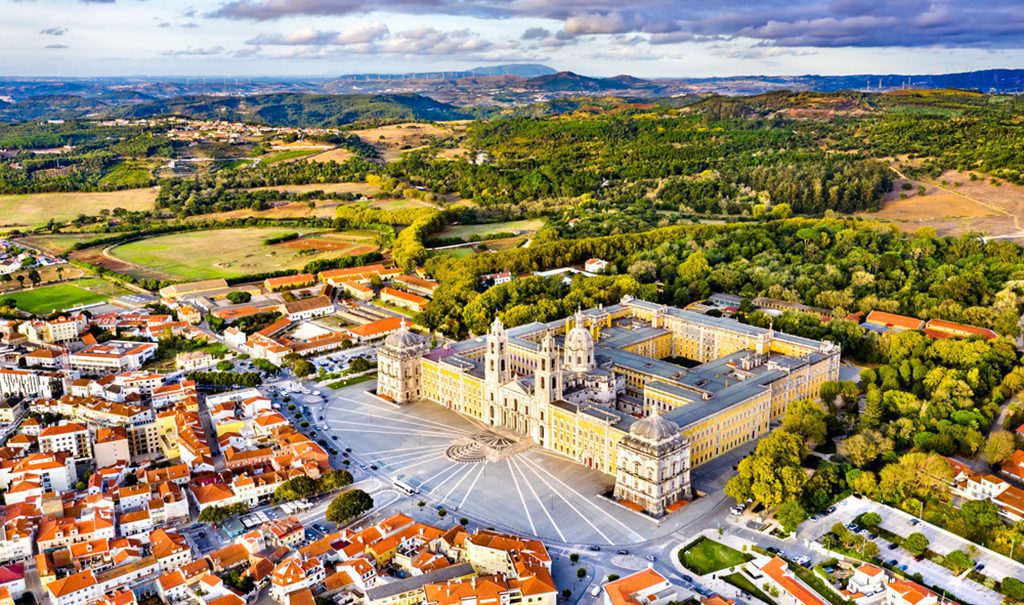
A UNESCO world heritage site in Portugal. Image source: Leonid Andronov/Shutterstock.com
The magnificent Palacio Nacional de Mafra can be found around 30 kilometers north-northwest of Lisbon. The vast Baroque and Neoclassical palace-monastery, constructed in 1717 with the money obtained from Dom Joao V’s Brazilian lands, is an outstanding aesthetic and architectural marvel.
It has more than 1,200 rooms and has a stunning basilica and bell towers in addition to exquisite cloisters, royal residences, and a wonderful library. As you wander the hallways of Palacio Nacional de Mafra, you’ll be treated to exquisite design, luxurious furniture, and breathtaking pieces of art.
18. Benagil Cave
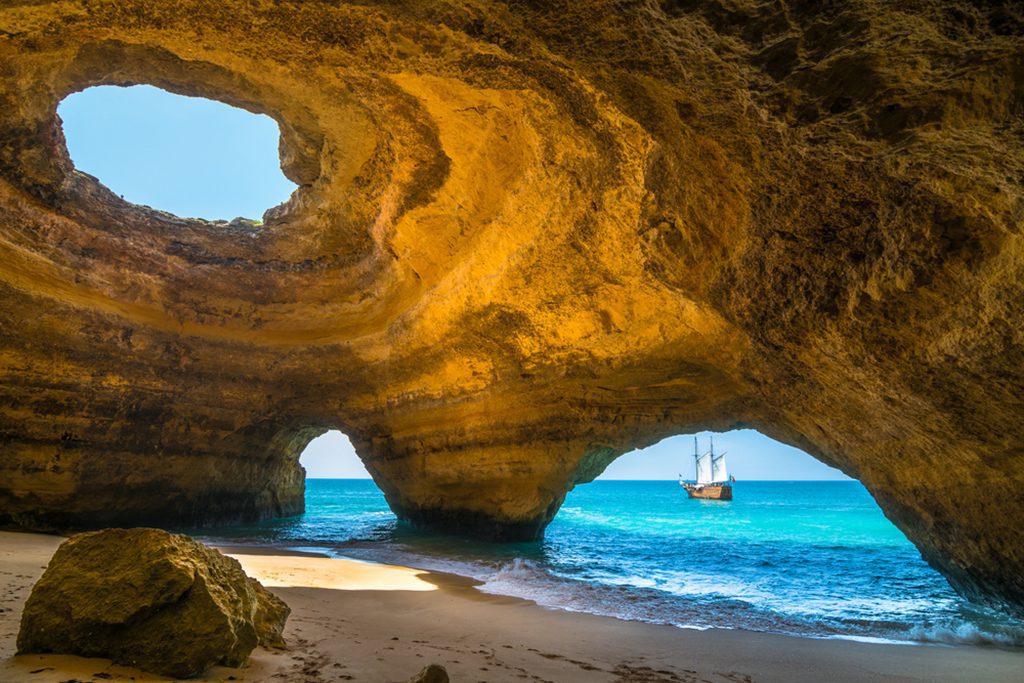
Explore the natural beauty of Carvoeiro Algarve in Portugal. Image source: Nido Huebl/Shutterstock.com
Benagil is a small fishing village on the southern coast of the Algarve, well known for its stunning sea cave. The cave has been eroded by the waves over millennia, revealing beautiful rock formations within.
Benagil Cave, which can only be reached by boat or kayak, has a beautiful golden sand beach where tourists can relax. While the sheer height and scale of the structure are impressive, the gaping “eye” in the ceiling is the real show stopper, providing a beautiful contrast between the sky and the rock below.
17. Convent of Christ (Tomar)
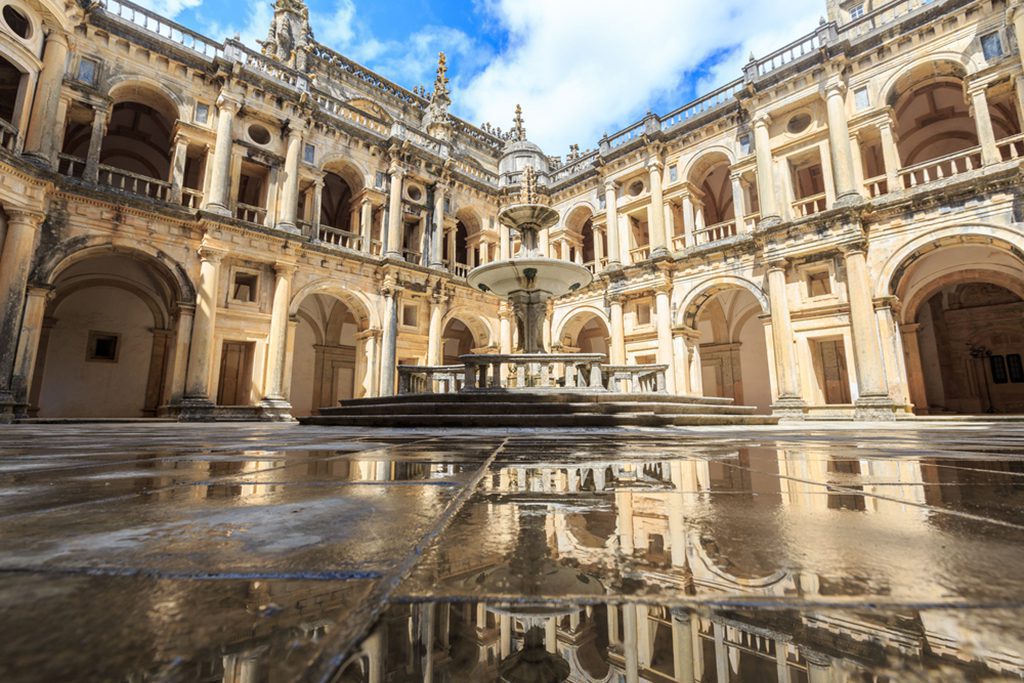
Explore the rich history of Tomar, Portugal. Image source: Pigprox/Shutterstock.com
Tomar, the former seat of the Templars, is now home to several fascinating museums and cultural landmarks, the most remarkable of which is the huge castle complex of the Convent of Christ. It was established in 1160, but its impressive walls already included centuries-old chapels, cloisters, a church, and a castle.
Fantastic Gothic, Renaissance, and Manueline elements can be seen here and there, but the amazing 16-sided Charola church is the main draw. The Convent of Christ was a bastion of riches and power for centuries. This is where Portugal’s famous Age of Discoveries started.
16. Batalha Monastery
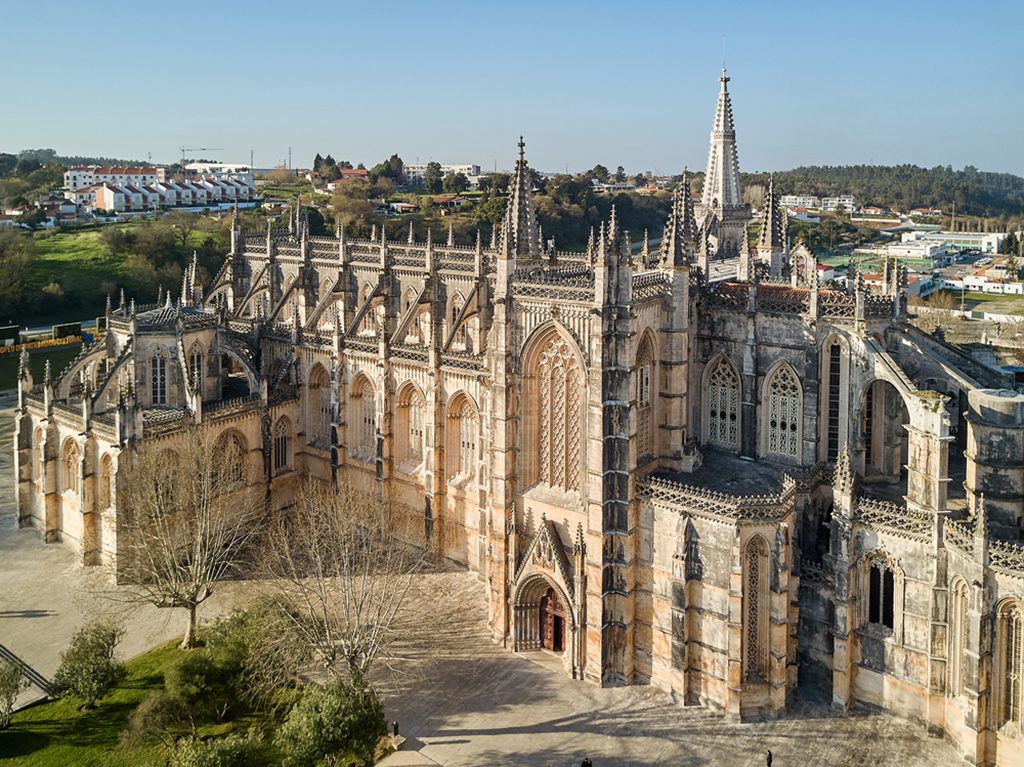
Discover the beauty and history of Batalha, Portugal. Image source: Gen_Shtab/Shutterstock.com
Batalha Monastery, located in Portugal’s Centro Region, is renowned as one of the country’s best specimens of Late Flamboyant Gothic design. The building, which was built in 1385 to commemorate the nearby Battle of Aljubarrota, is a shining example of opulent design, with innumerable elaborate details on full display.
The inside is just as ornate as the pompous façade, which is covered with pinnacles, parapets, facades, and spectacular buttresses. The Dominican Convent of Batalha is the town’s top tourist destination, and it offers sightseers the chance to see massive tombs, peaceful cloisters, and incomplete chapels.
15. Rota Vicentina
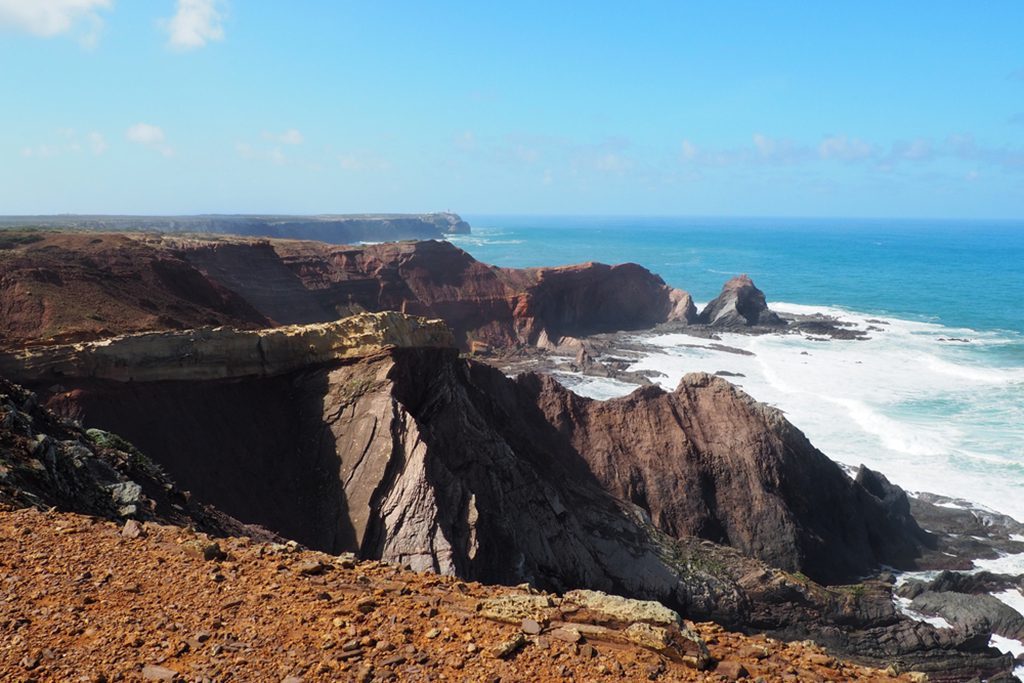
Experience the natural beauty of Portugal’s coastline. Image source: Freenaturfeeling/Shutterstock.com
Rota Vicentina is an incredible route system that meanders around the southwest coast of Portugal, taking hikers and bikers across a wide variety of landscapes and breathtaking views. The almost 400 kilometers of hiking routes wind through beautiful forests and quiet coastal towns, along rugged cliffs, and through flower-filled meadows.
The Historic Way and the Fisherman’s Trail are the two most traveled routes; however, they both take more than a week to complete. Some of the most beautiful and remote areas of Alentejo and the Algarve can be explored by taking a leisurely stroll along their lovely trails or by going on a shorter, one-day walk.
14. University of Coimbra
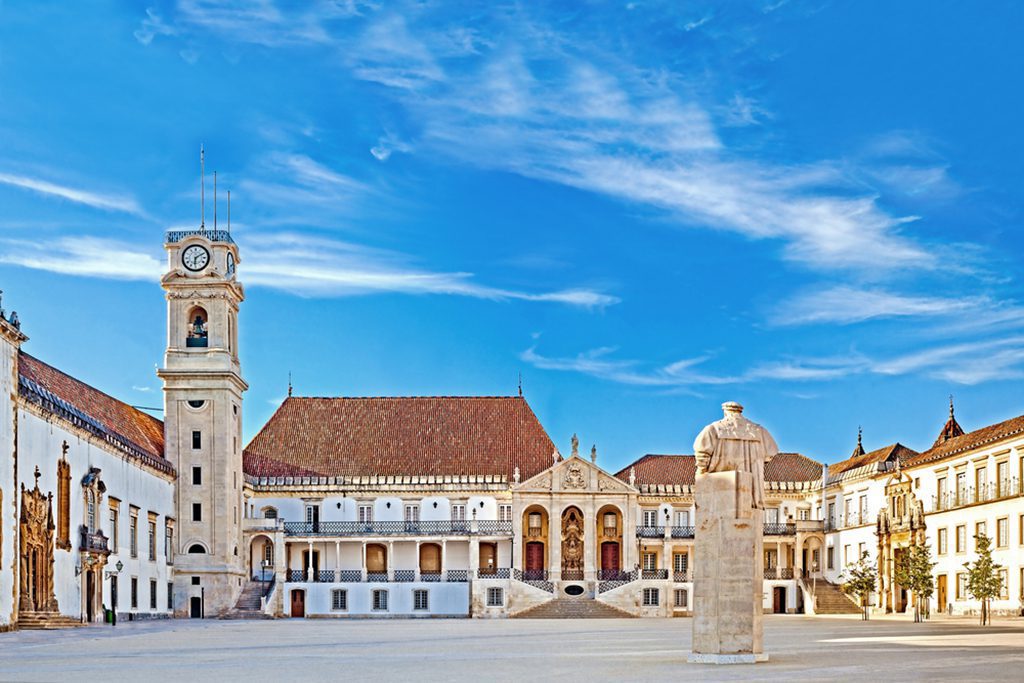
Explore the historic campus of Coimbra University in Portugal. Image source: Pani Garmyder/Shutterstock.com
Originally founded in 1290 in Lisbon, the University of Coimbra was relocated to its current location in 1537, making it one of the world’s oldest universities. Beautiful old buildings surround an attractive and spacious courtyard on this site, which sits on a hill in the city’s historic core.
The magnificent Biblioteca Joanina and its stunning Baroque library are the building’s crowning glory. The bell tower, which dates back to the 16th century, offers spectacular views of Coimbra. Despite its long and storied past, this Portuguese institution continues to attract top students and rank among the country’s best.
13. Roman Temple of Évora
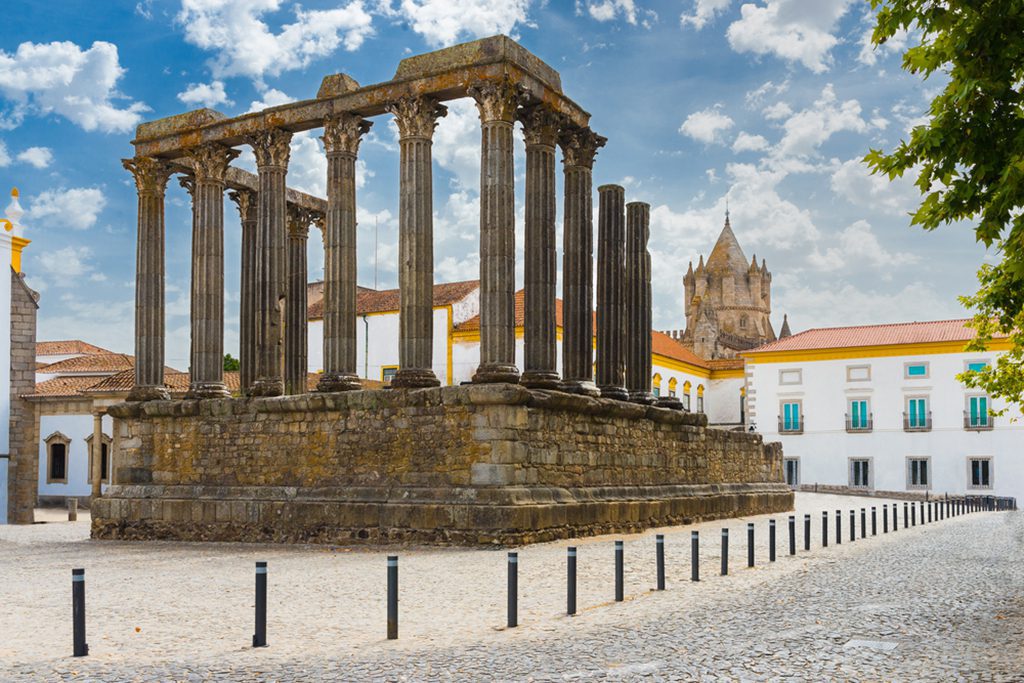
Discover the ancient Roman history of Evora, Portugal. Image source: Fotoeventis/Shutterstock.com
The Roman Temple of Evora, located in the city’s historic center, has likely been there since the first century AD. A beautiful colonnade with 14 Corinthian columns stands out at this remarkably well-preserved archaeological site, which is really old.
The ruins of the temple, which are now surrounded by churches, palaces, and ancient structures, are nevertheless awe-inspiring. The Roman Temple of Evora, formerly one of the most significant Roman structures on the Iberian Peninsula, is today one of the city’s most visited landmarks.
12. Rio Douro Valley
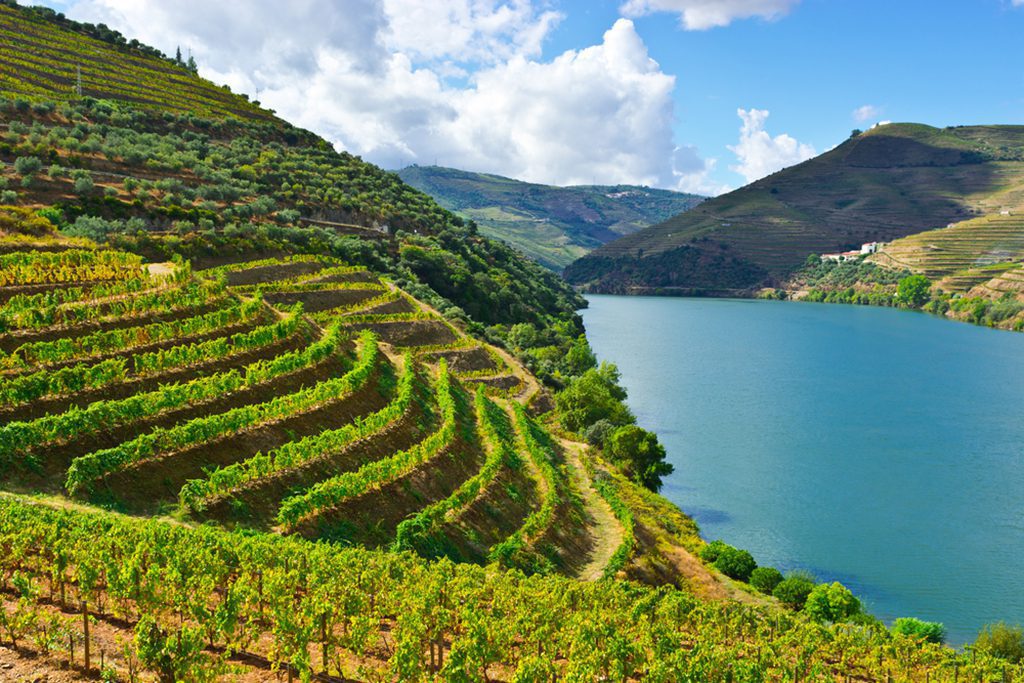
Experience the beauty and history of Portugal’s wine. Image source: hermitis/Shutterstock.com
The Rio Douro Valley is home to some of Portugal’s most beautiful scenery, including winding through gentle sloping hills, luscious vineyards, and lush farms. The Douro River, which begins near the border with Spain and ends in the Atlantic Ocean in Porto, is the third-longest river on the Iberian Peninsula.
Tourists can stop in charming towns and villages dotted along the route to see the area’s historic architecture, including ruined castles and rustic stone farmhouses that dot the landscape. A popular tourist activity is a river cruise down the Rio Douro, with stops at vineyards and wineries to experience the region’s famed wines and wonderful foods.
11. Jerónimos Monastery
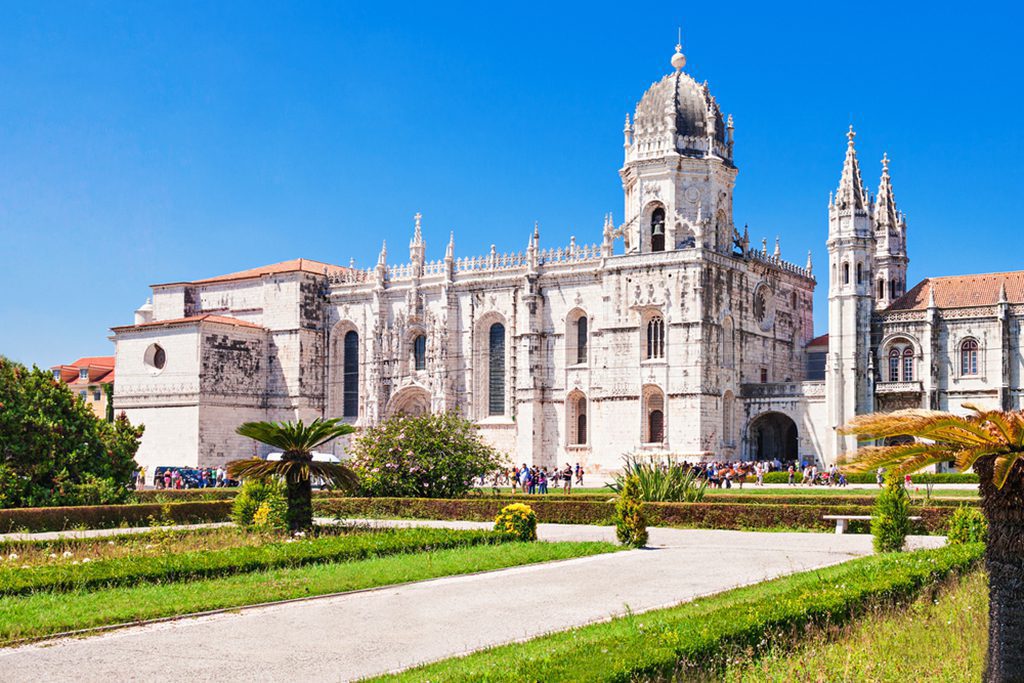
Discover the stunning architecture and history of Lisbon’s Jeronimos Monastery. Image source: saiko3p/Shutterstock.com
Jeronimos Monastery, in the Belem district of Lisbon, is one of the most stunning structures in all of Portugal. The church and monastery, which took over a century to complete, are architectural marvels of the 16th century, with stunning details and exquisite design at every turn.
Although its south doorway is covered with outstanding statues, the Manueline-style cloisters with their graceful arches and intricately carved pillars and patterns steal the show. Its church is just as beautiful, and it houses the remains of several well-known Portuguese people, like the poet Luis de Camoes and the explorer Vasco da Gama.
10. Marvao Castle
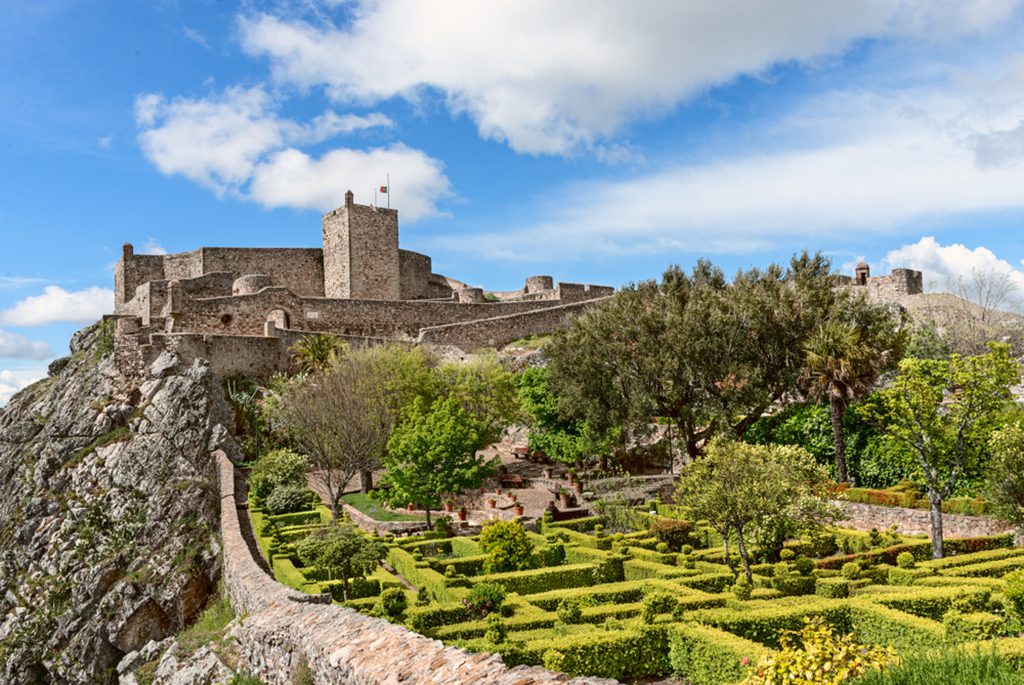
Explore the beauty and history of Marvao in the Alentejo region of Portugal. Image source: Fotoeventis/Shutterstock.com
Marvao Castle, because of its location on a towering hill in the Serra de Sao Mamede, offers breathtaking vistas in every direction. The castle, which was built in the seventh century but has undergone many modifications and repairs since then, has survived almost unchanged. Exploring its strong defenses is an exciting adventure.
The castle’s impressive keep currently contains an informative display about the castle’s lengthy history and stands in stark contrast to the castle’s worn parapets and battlements. Both Marvao Castle and the nearby hilltop settlement are fascinating historical sites that have been fought over and governed by a wide variety of peoples, from the Arabs and Visigoths to the French and Spanish.
9. Parque Nacional da Peneda-Gerês
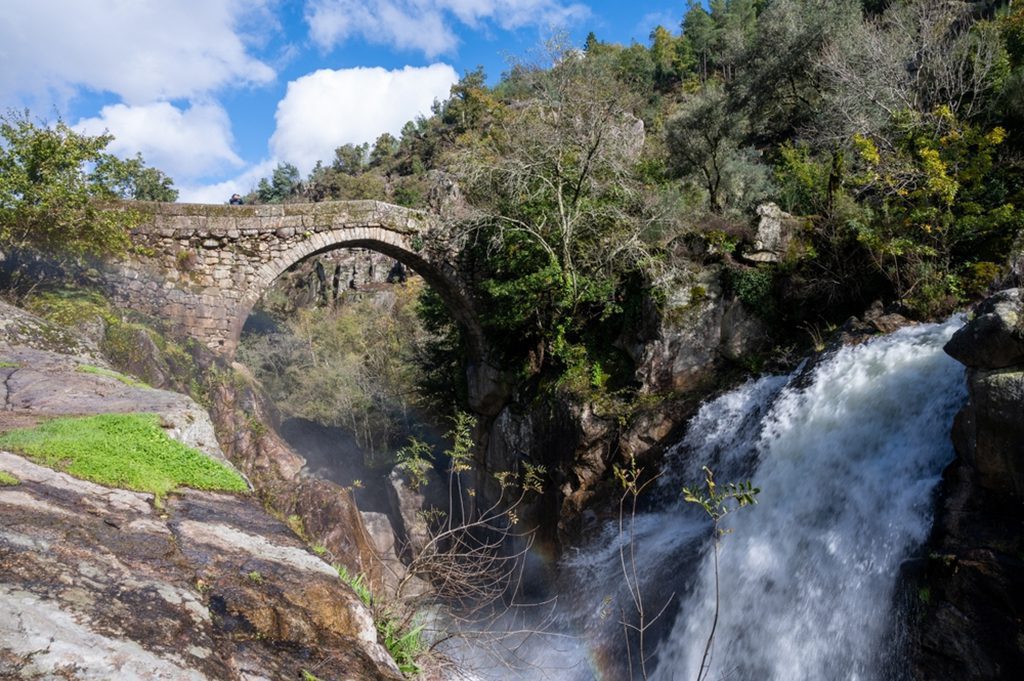
A stunning view of the Misarela Bridge, surrounded by lush greenery in the Peneda-Geres National Park in Portugal. Image source: J. Waleson Photo/Shutterstock.com
Parque Nacional da Peneda-Gerês is a massive national park in northwest Portugal, right on the Spanish border. It is the only national park in the country and has a wide variety of habitats and landscapes, with the majority of the park being mountainous.
Tucked away in its rolling hills and valleys are flower-filled meadows, verdant forests, and scenic trails. Not only does the park include breathtaking natural beauty, but it is also home to isolated settlements and centuries-old villages that have preserved their unique cultures and customs.
8. Alcobaca Monastery
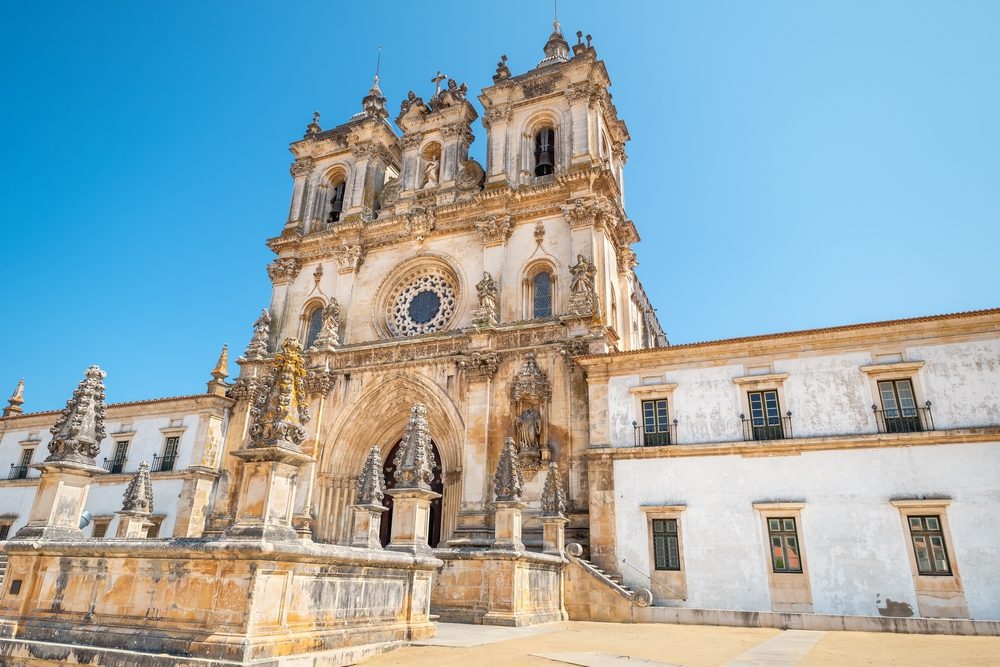
The Alcobaca Monastery is one of the most significant and spectacular religious structures in all of Iberia, and it towers above and serves as a focal point for the little city of Alocoba. The vast monastery complex, established in 1153 by Portugal’s first king, Afonso Henriques, features stunning examples of Gothic architecture, including a beautiful façade and outstanding statues.
The medieval monastery has a huge church, several cloisters, a sophisticated refectory, and a tranquil sacristy. Alcobaca Monastery is visited by tens of thousands of pilgrims and visitors each year due to its significance as a religious, cultural, and historical landmark.
7. Ponta da Piedade
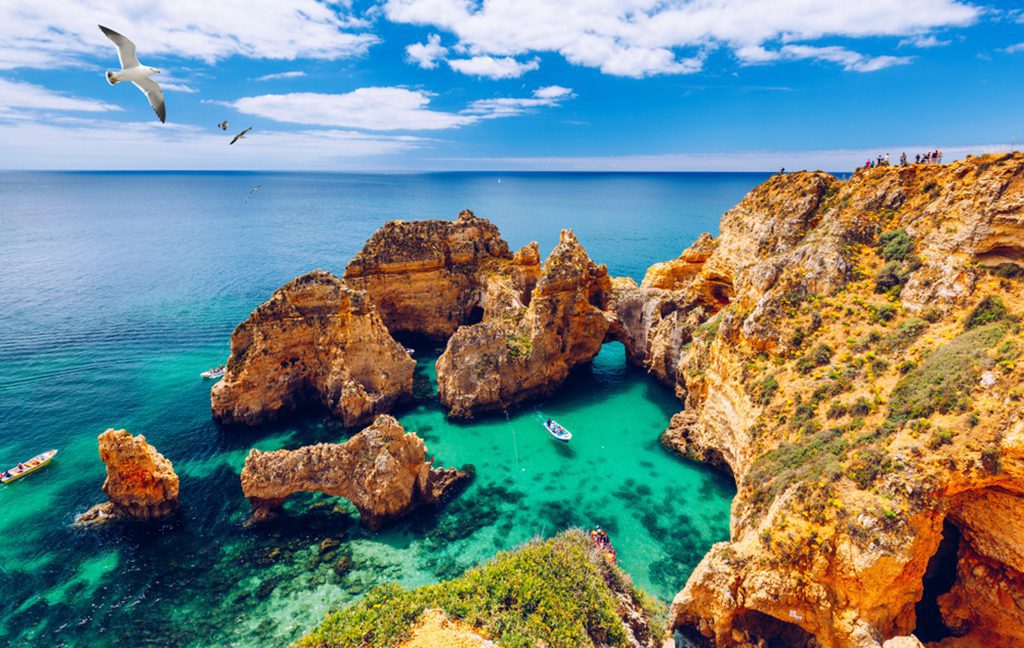
Seagulls fly over the rocky coast of Ponta da Piedade in Algarve, Portugal. Image source: DaLiu/Shutterstock.com
Just outside of Lagos, on the rocky coast of the Algarve, lies the gorgeous and conspicuous Ponta da Piedade, which protrudes into the Atlantic Ocean. Made up of towering sea pillars, arching rock arches, and stunning grottos, the desolate and windswept headland is fringed by glittering turquoise waters.
Appropriately meaning “point of mercy” in Portuguese, the treacherous but dramatic-looking cliffs provide for wonderful views, and many visitors kayak or take boat cruises to see them up close. Hiking at the top of the cliffs is also a joy for the spectacular views that the path offers of the powerful waves pounding the Ponta da Piedade.
6. Almendres Cromlech
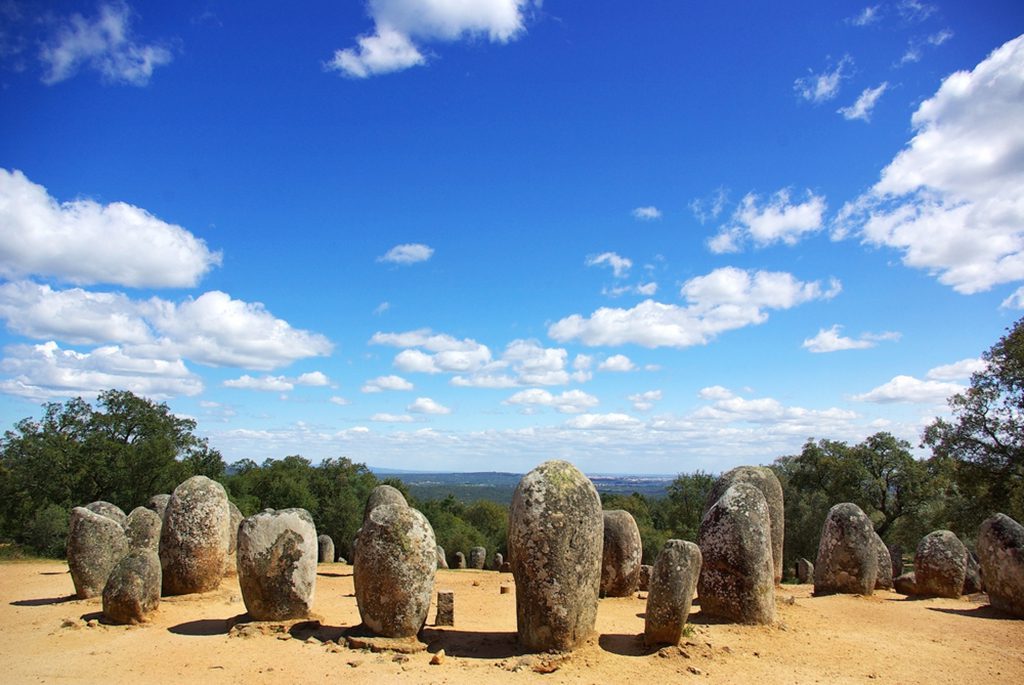
A panoramic view of the ancient standing stones of Almendres Cromlech in Évora, Portugal. Image source: inacio pires/Shutterstock.com
Almendres Cromlech is a spectacular megalithic formation outside of Evora that has been dated to the sixth millennium BC. Approximately 95 menhirs are arranged in a ring.
Some still have fading engravings on them, while others have little circular holes chiseled into them after having been outside for millennia. Almendres Cromlech, located on a picturesque and remote mountainside, is a fascinating sight and is believed to have had a religious, ceremonial, or astronomical purpose.
5. Belem Tower
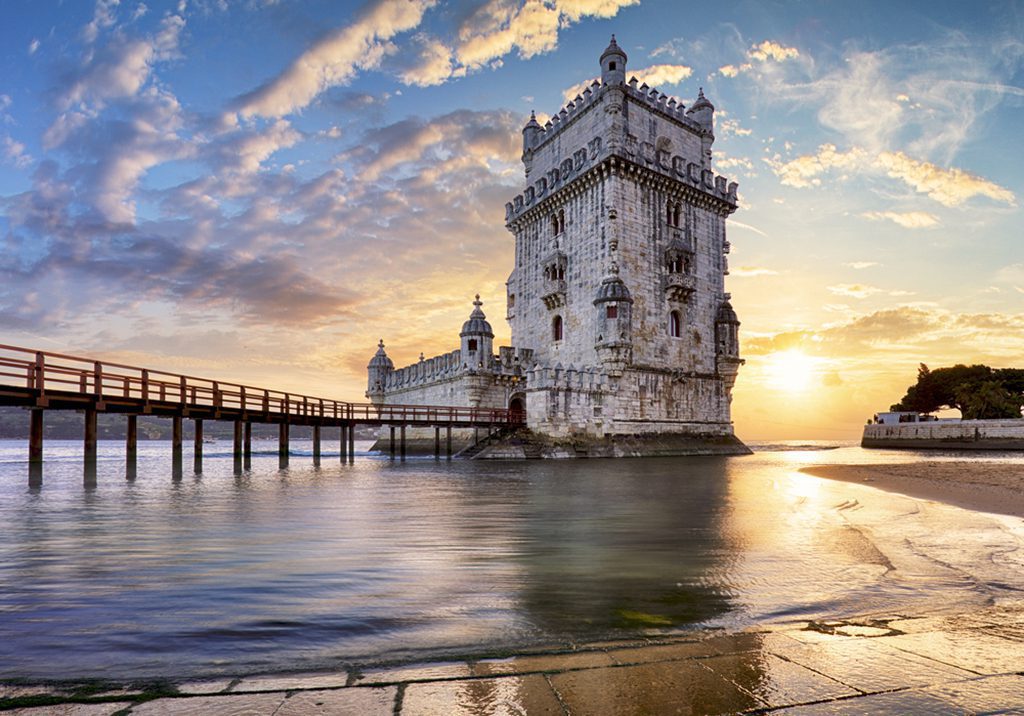
A stunning view of Belem Tower overlooking the Tagus River in Lisbon, Portugal. Image source: TTstudio/Shutterstock.com
Belem Tower, one of Lisbon’s most famous landmarks, is situated near the river’s mouth, where it offers magnificent views of the Atlantic Ocean. The tower and bastion, made of gleaming white limestone, date back to 1519 and have come to symbolize the Age of Discoveries and the departure of Portuguese explorers.
Despite being an integral element of the city’s defenses, the tower is a stunning example of Manueline style, with many intricate details still intact. Charming fenestrations and exquisite turrets are complemented with sparkling brickwork and nautical elements, and the watchtower offers heavenly views of the river.
4. Obidos Walled Town
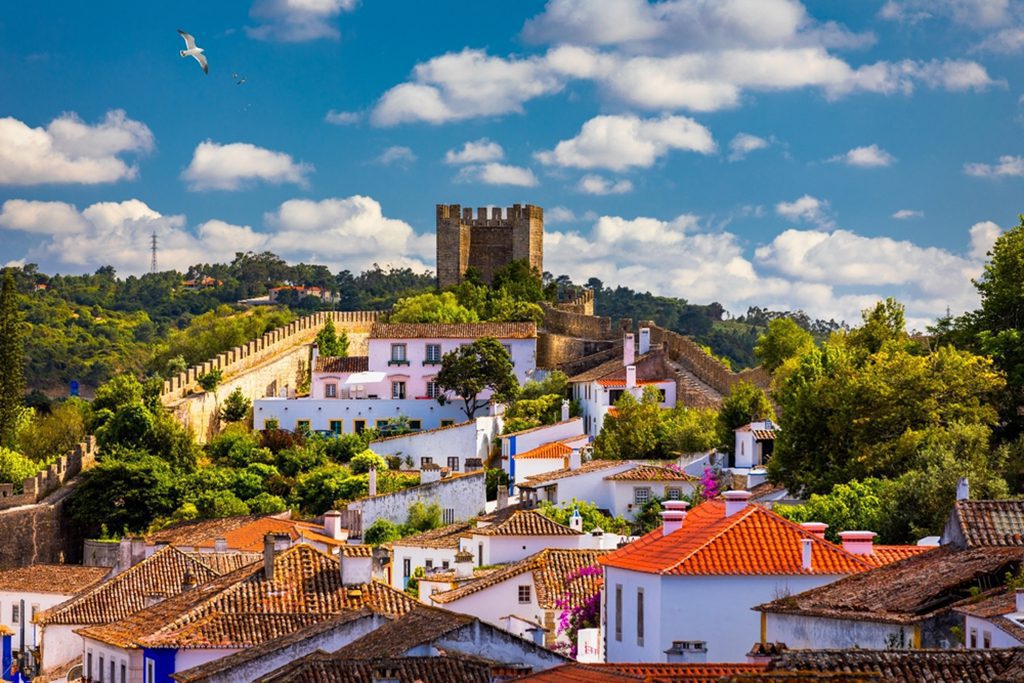
Obidos, a small town in Portugal’s Oeste Region, is famous for its charming historic center, which is ringed by city walls that date back centuries. It’s a delight to stroll through its medieval streets, which are lined with beautiful whitewashed churches and houses and surrounded by charming flower-lined squares.
Visitors can find classic restaurants and cozy cafés tucked away amid the city’s winding streets, while the castle and city walls are among the top sights. In July, Obidos has a lively Medieval Market complete with jousting, juggling, and jesters, making for a fantastic vacation destination.
3. Porto’s Ribeira
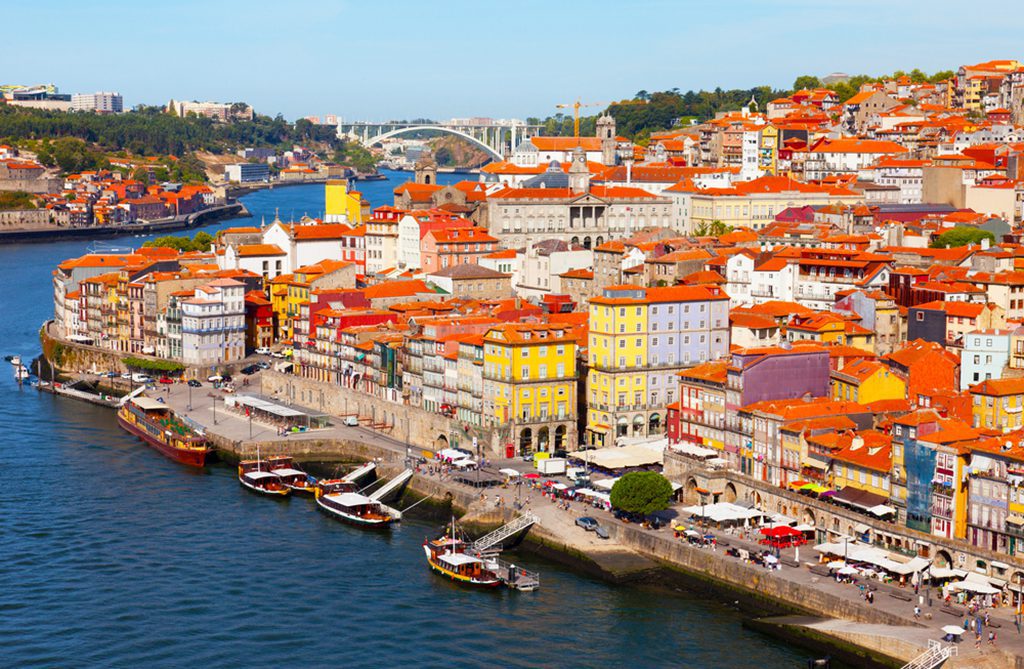
Riberia, in Porto, is the city’s most visited district because of its stunning vistas of the Douro River. Its seaside promenade is one of the city’s most picturesque vistas, with pastel-colored houses and buildings cascading down the hillside, and innumerable bars, restaurants, and cafés can be found here.
Charming cobblestone alleyways, ancient landmarks, and picturesque streetscapes abound throughout the historic district. Ribeira is a must-visit since it is both Porto’s liveliest district and its most relaxed.
2. Pena Palace
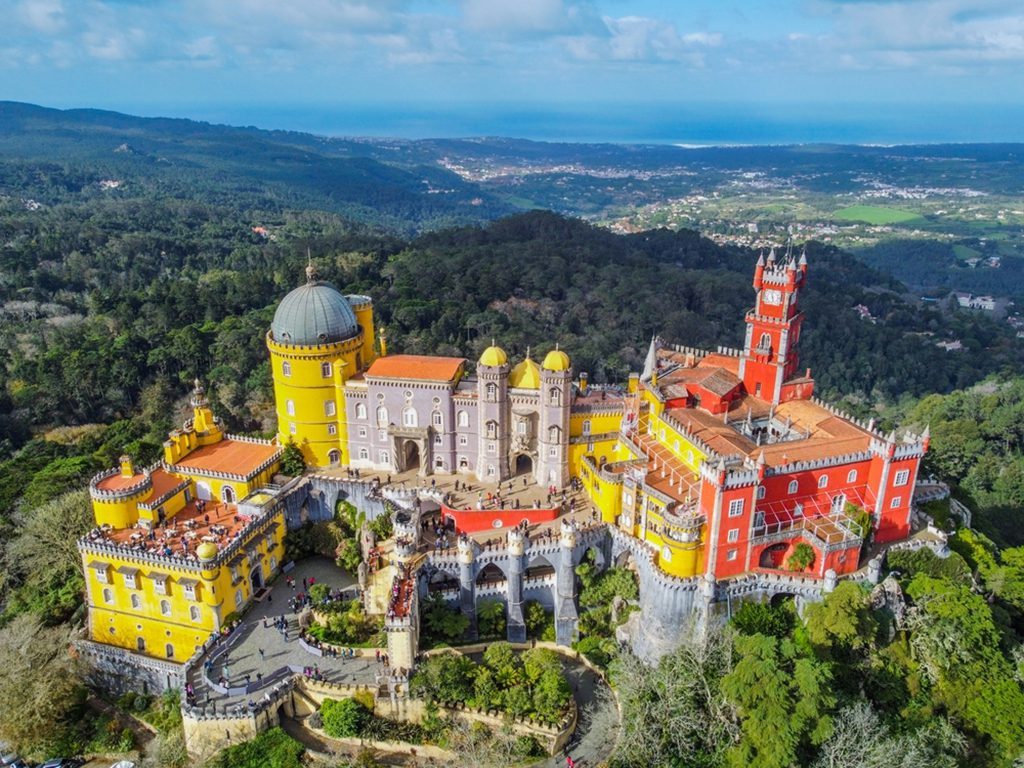
The colorful and ornate Pena Palace in Sintra, Portugal. Image source: Iurii Dzivinskyi/Shutterstock.com
Pena Palace, perched high in the Sintra Mountains, is a must-see for the thousands of tourists that go to Portugal each year to marvel at its beauty. It was finished in 1854 and exhibits exotic and eclectic architecture full of bright colors and unique details.
Beautiful gates, attractive facades, and crenelated clock towers glisten in sunny yellows and fiery reds, and uncommon and one-of-a-kind patterns can be seen throughout the palaces’ regal interiors. Pena Palace, the crowning achievement of Portuguese Romanticism in the nineteenth century, is unlike anything you’ve ever seen.
1. Alfama (Lisbon)
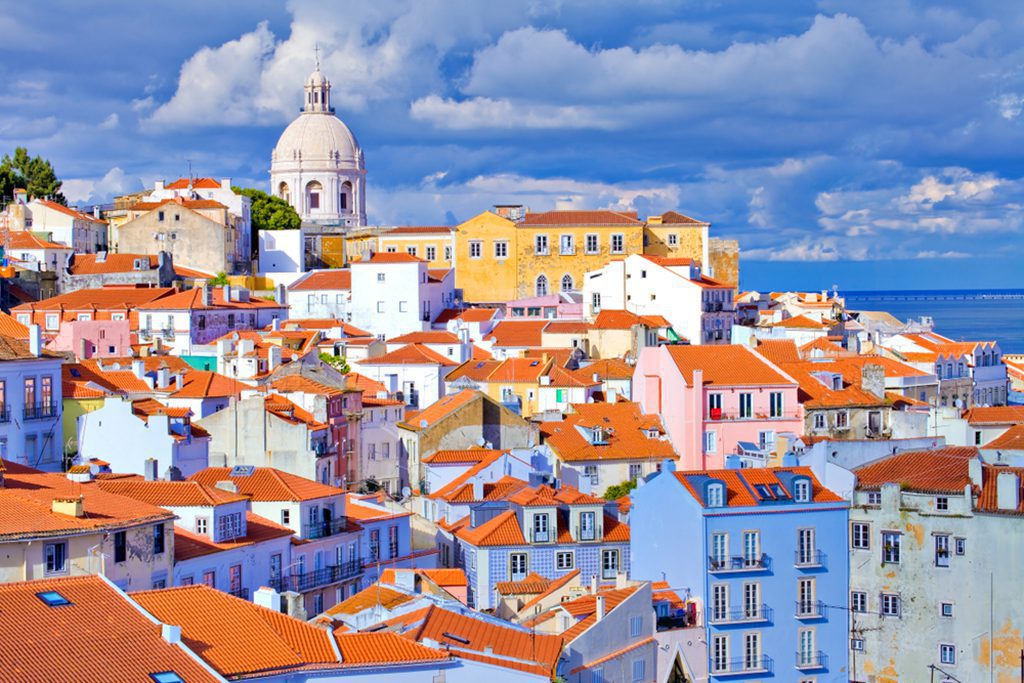
the beauty of the narrow alleyways and traditional colorful houses of the Alfama district in Lisbon, Portugal. Image source: andre quinou/Shutterstock.com
The Alfama quarter is the oldest and most charming in Lisbon, with its winding, narrow lanes made of cobblestones that cling to the side of a hill. Underneath the walls of Sao Jorge Castle and stretching all the way to the banks of the Tagus River, you’ll find a maze of small streets and picturesque squares teeming with traditional restaurants, vibrant bars, and friendly cafés.
The historic district of Alfama was mostly unharmed by the devastating 1755 earthquake that wiped out the rest of Lisbon. The district’s long history and the presence of somber Fado music give it a wonderful, unhurried ambience.


